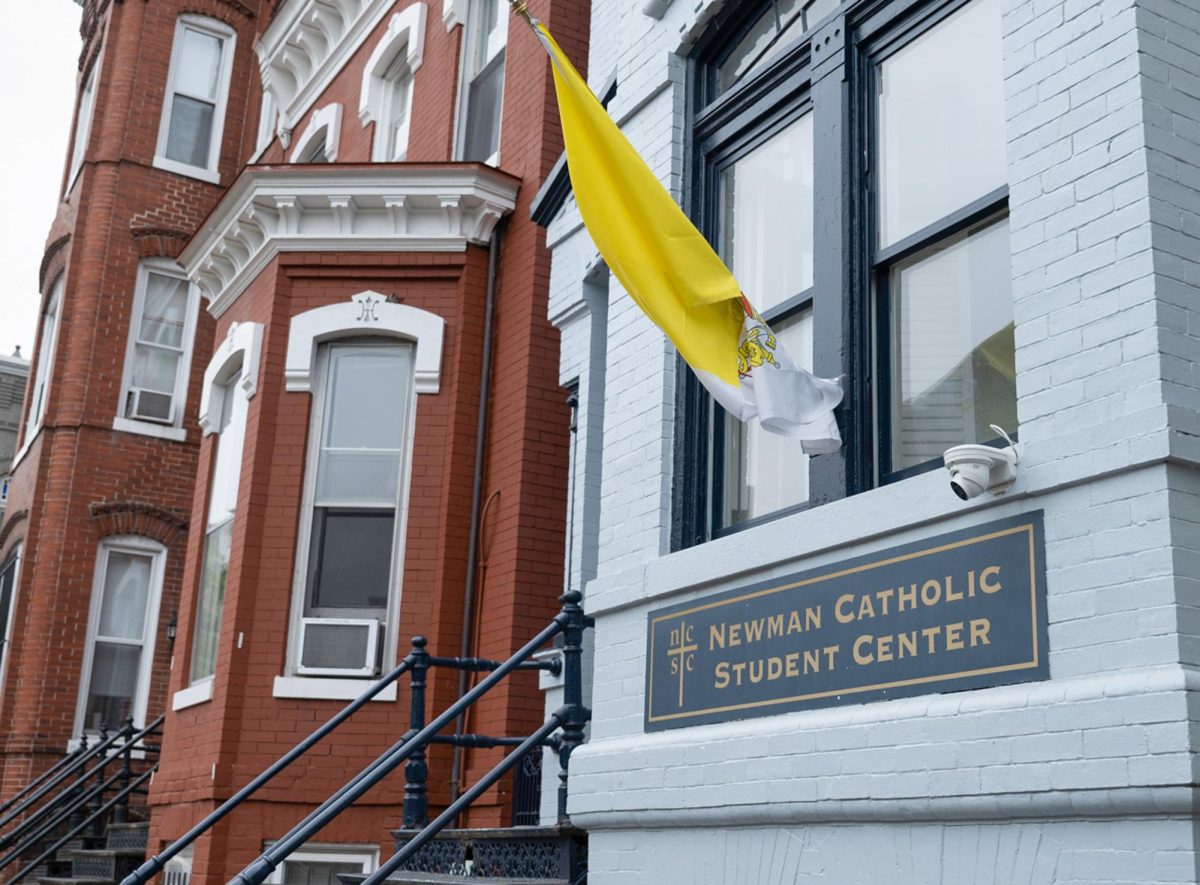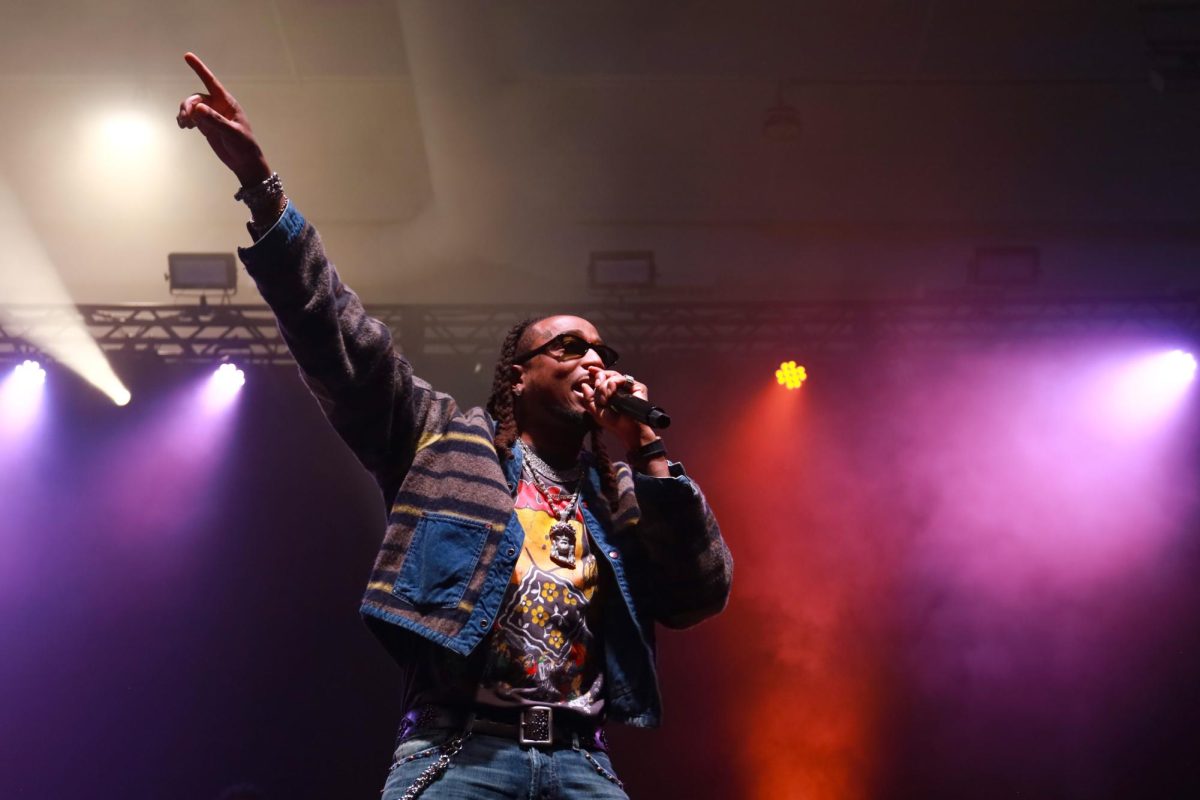
The University is celebrating 100 years on Foggy Bottom this year as well as its namesake’s 280th birthday. But this month has revealed the significance of other historical milestones, as well. It’s been 58 years since the University officially desegregated and 49 years since Martin Luther King, Jr.’s “I Have a Dream” speech was delivered just blocks from campus.
These milestones tie into this year’s theme for Black Heritage Celebration at GW – “Bleeding Black.” The theme incorporates the many facets of African-American and Afro-Latino culture while acknowledging the racial struggles and advances made at the University over the decades.
“There is definitely a message of pride we want to covey with this year’s theme. ‘Bleeding Black’ symbolizes the historic and current cultural struggles our community has faced and overcome,” said senior Dominique Bozeman, the student events coordinator for this year’s Black Heritage Celebration. “The message is for us to be educated enough to exude that pride for more than a month out of the year.”
After GW desegregated in 1954, students from the “Black Peoples Union” began establishing a prominent presence on campus, organizing the University’s first events in honor of a black history month in 1968. The group eventually transformed, laying the groundwork for what is today the Multicultural Student Services Center, an organizer of African-American History Month celebrations on campus.
Vice president of the Black Student Union and Williams House Coordinator Malissa Wilkins notes an important duality to the celebration’s theme.
“‘Bleeding Black’ represents two inherent themes: The love within the black community and then those things which continue to plague the black community, such as incarceration and black-on-black crime.” Wilkins said. “In other words, bleeding black with love for myself and my community, yet bleeding black in a literal sense as my brother on the corner is killed by his brother for a pair of shoes.”
Director of the Multicultural Student Services Center Michael Tapscott compares the theme to a common adage of loyal appreciation heard on campus of “bleeding buff and blue.”
“Bleeding Black can also relate to the blood, sweat and tears of our ancestors who answered challenges that paved the way for success in America for the following generations,” Tapscott said.
Although universities nationwide have adopted broader diversity initiatives, minorities make up a small percentage of college students nationally. Only 33.4 percent of African-American males go on to post-secondary education after high school graduation, according to a research study done by the College Board.
Recent diversity initiatives made at the University and the creation of the Multicultural Student Services Center in 1994 aim to combat these staggering statistics, hoping to make the sentiments of black history month salient all year.
Wilkins noted that minority students face challenges not only in higher education, but socially as well.
“It’s not enough [for a minority student] to just get into school. I think that once we are here we then have to decide whether or not to be so involved in making known who we are to others on campus, being proud of who we are and embracing what we love about ourselves,” Wilkins said.
A breadth of campus and student organizations, including the Black Student Union, the Williams House and programs within the Multicultural Student Services Center, have championed initiatives to provide networks for minority students while also educating the GW community about multiculturalism.
“The goal of [the Black Heritage Celebration] planning committee, the participating organizations and the staff at the MSSC is to reach those who have an interest in the issues being addressed. To limit that to any particular racial group would be a disservice to the values of our community,” Bozeman said.
It was 1938 when former University President Cloyd Heck Marvin issued a memorandum publicly defending the institution’s refusal to admit “colored” students. But Tapscott added that black students were enrolling in night courses as early as 1949. He said the first black man he is aware of attending GW Law School took classes in the late 1870s.
“The Williams House has definitely developed a stronger bond with other organizations on campus such as the GW Hillel and Jewish Student Association, who we now will have an Annual Freedom Seder with in honor of the similarities and differences we appreciate about each other’s communities,” Wilkins said.
A theme of embracing all cultures has resonated in events surrounding “Bleeding Black” initiatives. Past events like “Black & Brown in America” aim to create a dialogue about relationships among ethnic groups, while upcoming events like “Taste of Africa” show off the food and traditions of different African cultures.
“I remember a colleague once said, ‘We have to honor our history, with all its beauty marks and all of its warts.’” Tapscott said.
Black Heritage Celebration events brought by the MSSC will run through March 3.







